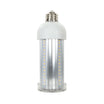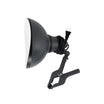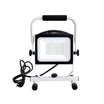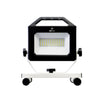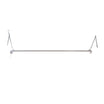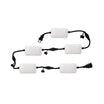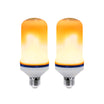Indoor gardening has become increasingly popular as enthusiasts look to cultivate everything from fresh herbs and vegetables to beautiful flowers year-round, regardless of climate conditions. One key component that can significantly influence the success of these indoor ventures is the type of lighting used. Among the most effective solutions for achieving robust plant growth indoors are full-spectrum LED grow lights. This blog post will explore what full-spectrum LED grow lights are, how they work, and why they might be the best choice for your indoor garden.
What Does Full-Spectrum Mean?
Full-spectrum LED lights are designed to closely mimic natural sunlight, providing a broad range of light wavelengths that cover the entire spectrum visible to the human eye and beyond. These lights typically combine various colors—blue, green, red, and sometimes ultraviolet (UV) and infrared (IR) wavelengths—into a single lighting solution. This spectrum is crucial because plants use different wavelengths throughout their lifecycle for various physiological processes.
The Science Behind the Spectrum
Plants primarily absorb blue and red light. Blue light promotes robust leaf growth and strong stems, while red light influences flowering and fruit production. However, other wavelengths, including green, UV, and IR, also play roles in plant health and development. Green light, for example, penetrates deeper into the leaf structure and can enhance growth rates, while UV light can help produce more resilient plants with enhanced flavors and colors.
Benefits of Using Full-Spectrum LED Grow Lights
Simulates Natural Sunlight:
Full-spectrum LED grow lights simulate the properties of sunlight, providing a balanced light source that supports photosynthesis effectively. This makes them ideal for a variety of plants and growth stages, from seed starting to flowering.
Energy Efficiency:
LEDs are well-known for their energy efficiency. They produce less heat and more light per watt compared to traditional grow lights like HIDs (High-Intensity Discharge) or fluorescents. This not only reduces energy costs but also minimizes the risk of heat stress on plants.
Longevity and Durability:
LED lights typically have a long lifespan, often running for thousands of hours before needing replacement. This durability makes them a cost-effective and low-maintenance option for gardeners.
Flexibility in Gardening:
Because they support a broad range of plants and development stages, full-spectrum LEDs are incredibly versatile. Gardeners can use them in various settings and configurations, adapting their indoor garden setups as their expertise and interest levels grow.
What is PPF?
Photosynthetic Photon Flux (PPF) measures the total amount of light, in the form of photons, that a lighting source emits per second within the photosynthetically active radiation (PAR) spectrum, which ranges from 400 to 700 nanometers. PPF is expressed in micromoles per second (μmol/s). PPF provides a quantitative measure of how much light a grow light produces that is actually usable for photosynthesis. This is crucial because not all the light emitted by a grow light is necessarily within the wavelengths that can be utilized by plants.
Full-spectrum LED grow lights represent a significant advancement in indoor gardening technology, offering a blend of efficiency, effectiveness, and convenience. By providing a light source that closely replicates the sun's natural spectrum, these lights ensure that your indoor plants receive the optimal light for photosynthesis, enhancing their growth, health, and productivity. Whether you are a novice looking to start a small herb garden or an experienced gardener aiming to maximize yields in a larger setup, full-spectrum LED grow lights are an excellent investment for your indoor gardening ambitions.
Explore Our Full-Spectrum LED Grow Lights

